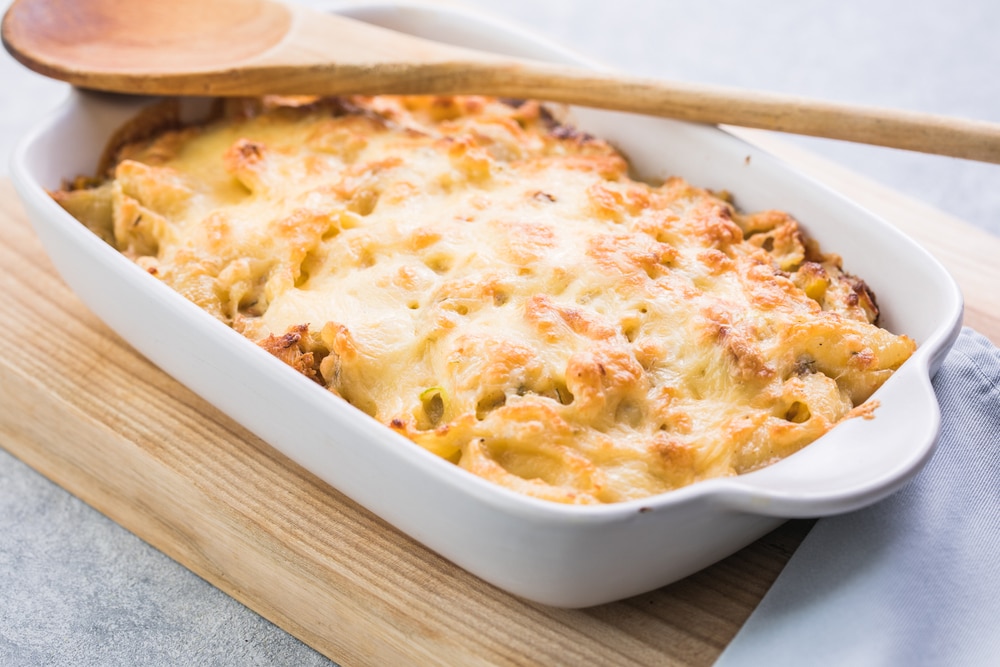Home chefs are now rediscovering long-forgotten recipes, often passed down through generations, bringing international flavors and history back to life in their kitchens. Exploring these old-school winter dishes can be a delightful journey that not only fills our bellies but also connects us to the culinary practices of the past. Let’s delve into some enchanting dishes that deserve a revival in our homes.
Turkey Tetrazzini
Once a beloved winter dish, turkey Tetrazzini was celebrated for its ease and flavor profile, featuring turkey, spaghetti, and a rich sauce made from cream cheese, heavy cream, and two types of cheese. The dish flourished at a time when households often prepared grand meals from whole turkeys. Nowadays, it tends to resurface primarily as a post-Thanksgiving leftover dish, limiting its appreciation throughout the winter months.
Those interested in enjoying this creamy delight more often can easily modify their approach, such as opting for store-bought rotisserie chicken for a quicker prep time without losing the essence of the dish.
Oxtail Stew
Oxtail stew represents a bygone era of utilizing every part of an animal, transforming a less-desirable cut of beef into a rich, hearty stew. Although the dish is an economical choice, the preparation requires patience, as this tough cut needs slow cooking to achieve tenderness. In today’s world, select cuts of beef dominate the market, but oxtail stew offers a rich history and deep flavor profile that is often overlooked.
Despite its rising price in modern culinary circles, the effort invested in crafting a traditional oxtail stew pays off in flavor and warms the heart during cold winter nights.
Potato Lasagna
Innovative during its inception around World War II, potato lasagna substituted traditional pasta with slices of potatoes to adapt to ingredient shortages. This ingenious approach not only provided comfort but also utilized available resources when flour was scarce. Though potato lasagna may seem untraditional in today’s culinary world, its potential for resurgence in the gluten-free cooking trend offers a chance to reconnect with history while catering to modern dietary preferences.
Mock Turtle Soup
Once regarded as a delicacy, mock turtle soup originated from the declining availability of actual turtle meat. Replicating the luxurious flavors through calves’ heads, this dish became widespread through canned versions produced by major brands. Time and changing food ethics have led mock turtle soup into obscurity, yet its rich narrative speaks to the resourcefulness of past culinary practices.
Shepherd’s Pie with Lamb
Shepherd’s pie has evolved significantly, shifting from its traditional lamb or mutton base to conveniently favoring ground beef in American kitchens. Developed in Scotland, it originally featured pastry dough instead of the now-familiar mashed potato topping. Understanding this evolution highlights the adaptability of dishes and how cultural exchange influences our food preferences.
Carrot Casserole
Carrot casserole epitomizes the resourcefulness of vintage dishes utilizing readily available ingredients like canned carrots and processed cheese. While its combination might seem unappealing today, this casserole has a nostalgic charm that could inspire modern takes on retro recipes. However, its lack of nutritional value raises questions about its sustainability in contemporary diet trends.
Winter Vegetable Cobbler
The savory cobbler is a forgotten treasure that combines seasonal vegetables with a comforting biscuit topping. This dish allows for creativity in the kitchen, using winter vegetables to elevate meals with nutritious elements. By revisiting traditional recipes, we can reexamine seasonal ingredients and their vibrant flavors, possibly igniting a resurgence in the popularity of such comforting fare.
Steak Diane
Once a glamorous restaurant choice, Steak Diane lost its luster due to safety concerns surrounding flambé cooking techniques. This dish, with its tenderloin and cognac sauce, exemplifies the drama and sophistication of dining out in past decades. While it remains a potential showstopper when prepared at home, the intricacies of flambéing make it less accessible for everyday meals.
Roasted Bone Marrow on Toast
Roasted bone marrow represents a culinary shift towards honoring the entire animal. Though it might evoke hesitation, this protein-rich delicacy served on toast has gained popularity in high-end dining. As we embrace sustainable practices, exploring bone marrow’s nutritious profile can integrate such traditions into modern menus, potentially refreshing their appeal to contemporary diners.
Ham and Beans
Rooted deeply in the history of American cooking, ham and beans emerged as a frugal dish during the Great Depression. Utilizing affordable ingredients while embedding rich flavors, this dish embodies the essence of comfort food. With its simplicity and heartiness, ham and beans warrant appreciation in seasonal meals, offering a solution to modern issues of food waste.
Hoosier Chili
Hoosier chili presents a unique twist on traditional chili, incorporating spaghetti into the mix—a reflection of regional culinary identity. Its somewhat unusual combination may raise eyebrows today, yet this dish is rich in history and flavor. Taking a chance on Hoosier chili could expand perspectives on classic comfort food and encourage diners to explore new culinary landscapes.
Mincemeat Pie
Embarking on a historical culinary journey, mincemeat pie speaks to a time when sweet and savory combined harmoniously. Though its ingredients may unsettle contemporary palates, the pie showcases creativity in utilizing leftovers to craft extraordinary dishes. Revitalizing mincemeat pie could invite diners to reconsider how diverse flavor profiles work together, ultimately broadening culinary horizons.
Pork Chops and Applesauce
Once a staple on American dinner tables, pork chops paired with applesauce appeared at a time when seasonal harvests coincided. As the culinary landscape evolved, the nostalgic dish drifted away, replaced by inventive meat preparations. Nevertheless, this rustic pairing still holds potential for revitalization, offering a classic taste amid a wave of modern cuisine.
Porcupine Meatballs
Porcupine meatballs are a clever representation of resourceful cooking during the Great Depression, combining rice into regular meatball mixtures to extend portions. While the name might deter some, its endearing appearance and simplicity cater to those looking for comfort without breaking the bank. By embracing such dishes, we enrich our culinary narrative and appreciate the creativity behind them.































